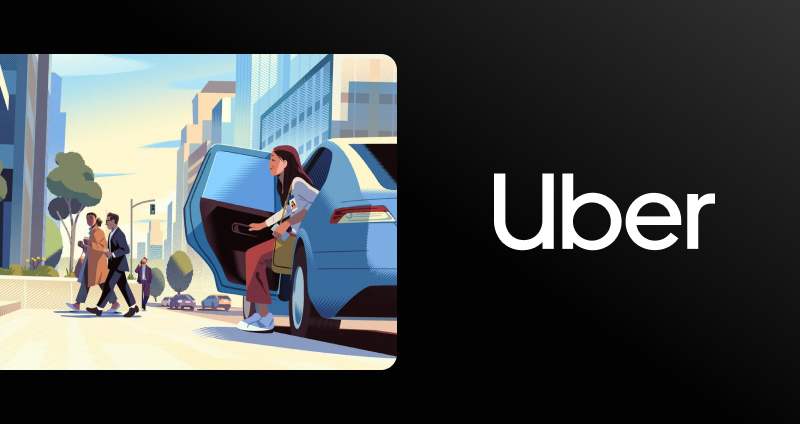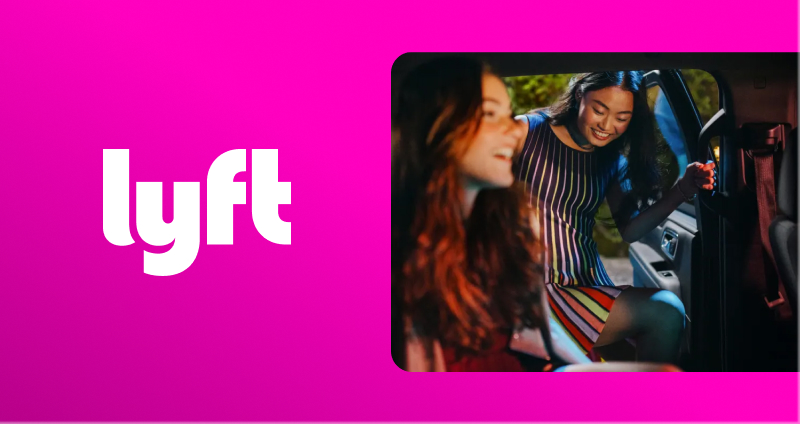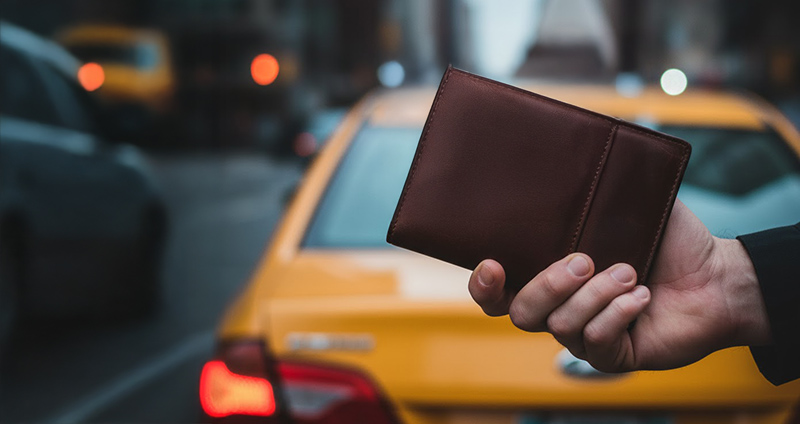Lyft vs Uber: Which Is Better for You?


At Mobion, we spend a lot of time understanding how people choose a ride. It is rarely planned. Someone leaves the office late and just wants to get home. Someone else heads to an airport and hopes they will not miss the flight. A friend after a concert checks the price on one app, then the other. This uber and lyft comparison happens right in those quick, everyday moments, when a person is standing on a sidewalk with a phone in their hand.
Drivers tell us their stories too. Some enjoy Lyft because passengers feel more relaxed. Others prefer Uber because they stay busier in large cities and near airports. The truth is, both apps work well for millions of people and the best choice can change from one hour to the next.
We build technology for taxi companies, so we look at these apps not as competitors to fear but as tools that shaped modern transportation. So let's move on to our comparison.
What is Uber

We have all been there. Phone in hand, late evening, a little tired, hoping the car comes soon. Uber feels like that friend who does not ask too many questions. It just shows up. People in New York sometimes joke that Uber knows their building better than the mailman. A rider in Phoenix told me she uses it because waiting for a bus in the heat is a nightmare. For many, it is simply part of everyday life now.
How Uber started
Uber did not show up as some huge plan. It started in San Francisco, sometime around 2010, when people were tired of playing the taxi lottery. You could call a cab and maybe it showed up, maybe it didn’t. If it was raining or late, good luck. A friend once told me he missed a job interview because his ride never came, and that kind of thing happened all the time. Then this new idea appeared. Press a button on your phone and a car would come to you. It sounded almost too easy. The first time someone tried it successfully, that was enough. Word spread in offices, over lunch breaks, at family dinners. Suddenly it was in Los Angeles, then Chicago, then everywhere. People stopped waving at cars like they were trying to flag UFOs. They just tapped their screens and hoped the driver was close. It was not a big dramatic change at first. It simply fixed a small annoying problem everyone had, and that made it grow faster than anyone expected.
Uber services and ride types
There is always a choice. A quick cheap ride to grab coffee. A slightly nicer car when you want a little more space. A bigger one if friends are coming too. Some drivers carry snacks or play music a bit louder if you look like you need a break. On airport mornings the map feels like a lifeline because seeing that moving little car reduces stress more than coffee does.
Uber pros and cons
Pros
- Shows up fast when the street is busy
- You do not need cash or long phone calls
- You see who is driving before they arrive
- Sharing the trip with someone feels like safety
Cons
- Surge prices feel like a punishment for bad timing
- If you live far from downtown, waiting can be long
- Drivers say earnings jump and drop unpredictably
- Some travelers only understand uber insurance when they need it
What is Lyft

Lyft feels like the softer choice for many people in the U.S. Some say they open it when they want a calmer ride or a friendlier face behind the wheel. Others pick it simply because the little pink logo stands out on their screen when they are tired and late. A few riders in smaller towns even swear Lyft shows up faster there. It depends on the place, the night, and sometimes just a quick gut feeling. Nobody makes a big plan. You tap, wait, and hope the car comes before the rain starts again.
How Lyft started
Lyft popped up in 2012 in San Francisco. If you are wondering when was lyft founded, that is the year most riders remember. At first it felt more like a community idea than a business. People did little fist bumps with the driver, like everyone was already friends. Many discovered it after a rough night when taxis ignored them or the bus never came. A friend would say, “Try Lyft, my driver was great,” and that was enough. Word moved through campuses, bars, and neighborhoods that needed late rides. Over time it became routine, and how does lyft work turned into a simple answer for most people: open the app, set pickup and destination, watch the car approach, and go. One day you noticed it was everywhere, even in places you did not expect.
Lyft services and ride types
Most of the time people just order a regular Lyft because they do not want to think too hard. If there are more friends or bags than seats, Lyft XL makes sense. Comfort rides exist for anyone who needs a little more room or a quieter space after a long day. Early flights are another reason people use it, especially when public transit is half asleep at 5 am. In some areas wheelchair accessible vehicles are available, which can mean a lot to someone who cannot just jump into any car.
Lyft pros and cons
Pros
- Many people find the vibe more friendly
- Sometimes cheaper in suburbs and smaller cities
- App is simple when you are in a rush
- Drivers often seem more relaxed
Cons
- Fewer cars available in some regions
- Longer waits outside city centers
- Premium options only in select locations
- Not as widespread nationwide as the competitor
Uber vs Lyft Prices
Prices change a lot depending on the city and the moment you open the app. A short ride in New York City can be around 15 to 25 dollars on a normal day. In Los Angeles the same distance may cost closer to 10 to 18 dollars. Chicago sometimes sits somewhere in between. People often check both apps because uber vs lyft prices do not stay the same for long. During busy hours or rainy nights you can suddenly see the number on the screen jump higher. On airport routes the prices also shift depending on traffic and demand. Riders usually trust their gut or their wallet. They tap the one that looks better at that moment.
Factors that change your final price
Many things can push the cost up or down:
- Time of day and rush hour
- Weather delays like rain or snow
- Driver availability near your pickup
- Distance and traffic conditions
- Airport fees in some cities
- Popular events that increase demand
- App rewards or discounts you have
People sometimes ask is lyft more expensive than uber. The honest answer: it depends on the city and what is happening around you. There is no single winner.
Uber vs Lyft price comparison by city
| Trip Type | New York City (USD) | Los Angeles (USD) | Chicago (USD) |
|---|---|---|---|
| Uber (average fare) | 27.50 | 26.00 | 24.00 |
| Lyft (average fare) | 18.17 | 23.00 | 23.50 |
| Price difference | Lyft ≈ $9.3 cheaper | Similar fares | Varies by time |
| Typical trip length | 6 miles | 5 miles | 5 miles |
| Notes | Lyft usually cheaper | Depends on surge time | No clear winner |
(Prices vary daily. Riders often check both apps to compare instantly.)
Payment Options in Uber and Lyft

Uber and Lyft both focus on simple in-app payments. Riders can add a credit or debit card, and many also use digital wallets like Apple Pay or Google Pay. PayPal is supported too in most cities in the United States. Riders never need to handle cash unless they prefer tipping that way. Some people ask whether uber and lyft accept cash at all, and in a few U.S. cities riders can use it under specific conditions. In some cases lyft take cash only applies to prepaid Lyft Cash balances added through retail stores or online. Most passengers simply choose an electronic payment because it feels faster and keeps the trip process smooth.
Lyft vs Uber pay cash requirements
Cash is not the default payment method on either app. But in certain markets both services allow it with rules. The short answer to lyft vs uber pay cash requirements is that it depends on where you ride. Uber supports cash mostly outside the U.S. Like Mexico, India, and parts of Africa. Lyft’s system works through adding funds to a balance which can be topped up with cash at participating stores. Riders may also tip in cash if they choose. For most Americans cash becomes the backup option rather than a primary one.
Comparison of Uber and Lyft payment methods in the U.S.
| Payment Method | Uber US | Lyft US | Notes |
|---|---|---|---|
| Credit / Debit Cards | ✅ | ✅ | Most common option |
| Apple Pay / Google Pay | ✅ | ✅ | Available in supported phones |
| PayPal | ✅ | ✅ | Not in all cities |
| Cash for ride payment | ❌ (in US) | ⚠️ Limited | Lyft requires balance top-up |
| Cash tips | ✅ | ✅ | Direct to the driver |
| Gift Cards & Ride Credits | ✅ | ✅ | Good for frequent trips |
Lyft or Uber: Who Is Each App Better For
Choosing between lyft or uber rarely feels like a big choice. Riders open an app, look at the price, check how long the car will take, and go. In most large U.S. cities Uber feels like the default option. More people use it and that usually means more drivers online. Lyft keeps a loyal base too, especially around universities and neighborhoods where riders want an easier vibe. In smaller cities some people notice Lyft showing lower prices at times. Others trust Uber more during busy hours or when they want a very quick pickup. The right pick often changes from one moment to the next. It is more about the situation you are in than about the brand.
Better for Riders
Riders see clear patterns across the country.
Uber tends to work better when you need:
- Fast pickup in major metros like New York, Los Angeles, Chicago
- A ride from airports or event centers during peak hours
- Premium choices like Black or SUV for a quieter trip
Example:
A short 4 mile ride in midtown Manhattan after work can show Uber cars arriving a few minutes earlier simply because more drivers are moving through the area.
Lyft often feels better when:
- You are in suburbs around Phoenix, Portland, or Midwest cities
- Late nights when a friendly conversation helps the ride feel safer
- You want a good price outside of rush hours
College riders in Boston say: “Lyft drivers seem more relaxed. Some LA riders open Lyft first when Uber prices spike at night!”
Better for Drivers
Drivers focus on staying busy without too much stress.
Uber can be stronger when
- There is lots of demand throughout the day
- You work near airports or concert venues
- You rely on constant trips instead of waiting around
Many drivers in large cities keep the Uber app active longer because it brings more steady traffic.
Lyft can be a good fit when:
- Bonuses pop up in specific zones
- Drivers enjoy chatting a bit more
- The market is smaller but still active
Some drivers say Lyft passengers feel easier to talk to which makes long shifts a little lighter. Most drivers do not choose sides forever. They switch apps during the day based on weather, events, or whatever brings the next trip sooner.
Key Differences Between Uber and Lyft
When riders compare the two, they do not think like analysts. They think about what happened last time and what they expect today. The most common difference between uber and lyft is simply how fast each one shows up. In downtown areas like Times Square or Hollywood, Uber often pops up first because more drivers are logged in. Lyft sometimes feels more relaxed and shows slightly better prices in neighborhoods a little farther from the center. People also notice that Uber has more types of rides. If someone needs a luxury sedan for a business meeting, they usually open Uber without thinking. If they just want a quick and friendly trip home after class, Lyft can feel like the easier pick.
Here are the things people keep mentioning:
- Uber usually has more cars around busy spots and airports
- Lyft often gets credit for friendly driver interactions
- Uber offers more premium ride categories
- Lyft sometimes comes out cheaper in smaller cities or suburbs
- The prices on both apps change minute by minute
- Market share gives Uber an advantage in the busiest places
Most riders switch between apps because there is no always-right answer. What works perfectly on a Monday morning might disappoint you Friday night.
Ready to give riders a smoother experience than both giants? Explore Taxi Service Software and see how you can upgrade your fleet without changing the way you work.
Final Thoughts
Choosing the right app often comes down to the moment you are standing on the sidewalk with your phone in hand. Some days Uber brings a car faster. Other days Lyft shows a lower price. The question is uber or lyft better does not have a single answer because every city moves differently. People in New York care about short wait times near busy streets. Riders in Oregon might choose the friendlier option on a late night. Drivers switch apps depending on where the requests come from. That alone says a lot. Both services work well for everyday trips, airport rides, or quick weekends out with friends. The smartest approach is to keep both apps ready and compare whenever you need to go somewhere. Businesses can learn from this too. If you want your own fleet to offer that same reliable experience, you can always request demo and discover how modern tools help taxi operators compete and grow.
F.A.Q.
Ready to revolutionize your taxi business?
Choose what you need: